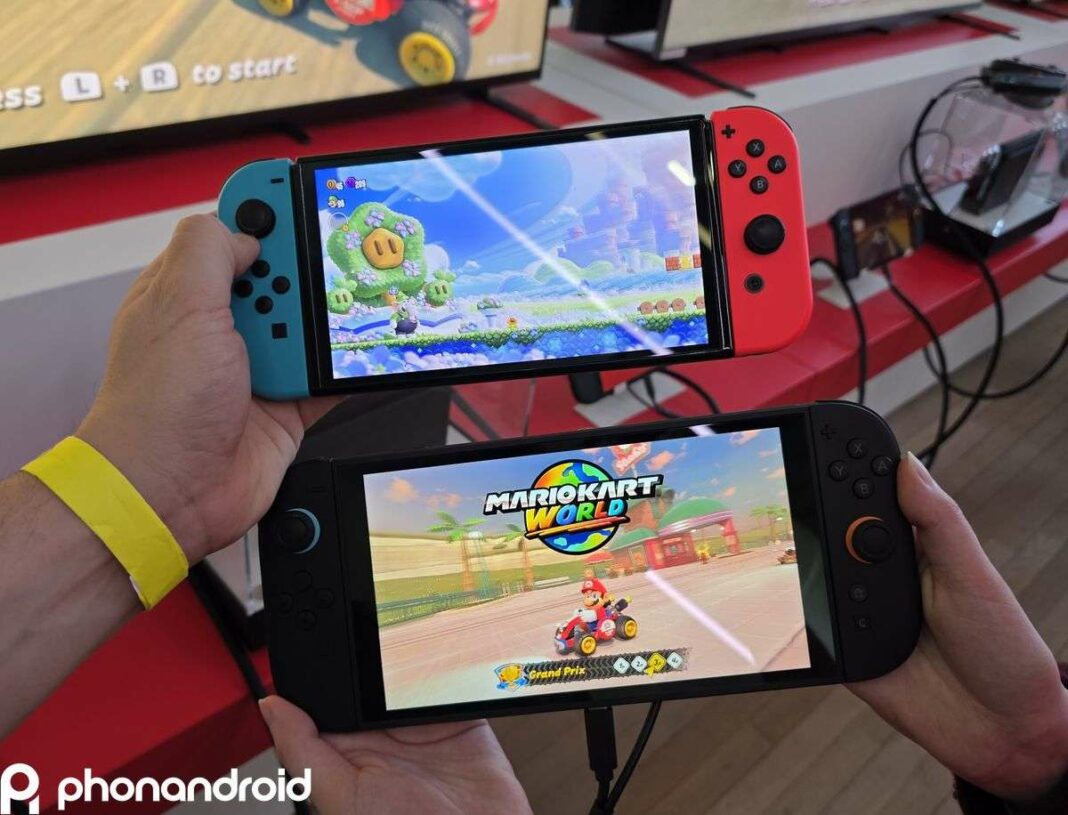Nintendo’s Switch 2 introduces significant upgrades over the original model, including a larger 7.9-inch LCD display with Full HD resolution, enhanced Joy-Con controllers with improved ergonomics and mouse-like functionality, and a substantial performance boost with a new Nvidia Tegra chip capable of 4K output in docked mode. While it maintains the hybrid design, the Switch 2 aims to address reliability issues and enhance user experience, making it a compelling option despite its higher price.
What distinguishes the innovative Switch 2 from the original Switch (both LCD and OLED versions)? While the Switch 2 introduces several substantial enhancements, it doesn’t necessarily surpass its predecessor in every aspect, despite its higher price point.
The anticipation has been intense, but Nintendo has finally revealed the Switch 2, with most of its features now disclosed. Staying true to the hybrid design that contributed to the initial success of the console, Nintendo has also integrated a variety of new functionalities to enhance the user experience. What sets these two consoles apart? What advancements does the Switch 2 offer? This comparison aims to shed light on these queries.
Key Technical Specifications: Switch 2 vs. Switch 1
Design: A Sophisticated Upgrade for Switch 2
The original Switch has faced criticism regarding hardware reliability. Aware of this, Nintendo aims to minimize user complaints and repair requests with the new version. A significant focus is on the Joy-Con controllers, which are expected to be more robust and less susceptible to drift issues in the Switch 2. Unlike the first model, the Joy-Con now attach to the console using a magnetic mechanism, enhancing user convenience and reducing the risk of mishandling.
The thumbsticks on the Joy-Con 2 controllers are slightly larger, making it easier for players to maneuver. Nintendo claims that these joysticks are quieter and provide smoother movement. To further enhance user comfort, the L and R buttons have been elongated, while the SL and SR buttons are larger for improved precision, especially when holding the Joy-Con 2 horizontally.
In a notable upgrade, the Joy-Con for Switch 2 can function similar to a mouse. Each Joy-Con 2 features sensors on its colored edge, enabling users to slide it on a flat surface to control compatible games, providing a mouse-like experience. This feature will be particularly beneficial for strategy games (for example, Civilization VII will be available on launch day).
Nintendo has also enhanced the tactile experience with improved HD vibrations, delivering more intense and precise feedback than the original model. Additionally, the wrist strap has been redesigned for easier attachment and removal, promoting convenience during motion-based gameplay.
The kickstand at the back has been significantly improved. Previously precarious, the new U-shaped kickstand offers enhanced stability and durability, allowing for better adaptability with new tilt angles (up to 150 degrees) for various usage scenarios.
Another upgrade includes a second USB-C port on the Switch 2. In addition to the existing port at the bottom, there’s now a top connection, facilitating accessory use (like the new camera) or charging while in tabletop mode.
Display: No OLED, Yet 1080p Resolution
The most striking evolution is the display size, growing from 6.2 inches on the original Switch or 7 inches on the OLED variant to a substantial 7.9 inches for the Switch 2. Nintendo has opted for LCD backlighting technology, which may come as a surprise given the availability of an OLED model with the first generation. OLED typically offers deeper blacks, superior contrast, and more accurate colors.
To ensure a satisfactory experience, Nintendo has upgraded the resolution to Full HD (1,920 x 1,080 pixels), in contrast to the standard HD (1,280 × 720 pixels) of the original Switch. This enhancement was crucial, as maintaining 720p would have significantly reduced pixel density with the larger screen. Moreover, HDR is now included in the Switch 2, offering improved contrast and vibrancy.
The refresh rate has also been ramped up to 120 Hz on the Switch 2, supporting gameplay at up to 120 frames per second, in contrast to the 60 Hz display of the original Switch, which is limited to 60 frames. Variable refresh rate (VRR) technology also minimizes screen tearing on the new device.
Also read: My experience previewing the Nintendo Switch 2 revealed an unexpected yet delightful detail.
Performance: The Most Significant Technological Advancement
Performance is where the Switch 2 is generating the most excitement. While the original Switch was already underpowered at launch, it has become increasingly limited over time, constraining game developers. Nintendo is once again utilizing a customized Nvidia Tegra chip, now with a more advanced process. Although precise comparisons await testing, the performance gap is expected to be substantial.
In docked mode, the Switch 2 can display a 4K resolution (3,840 x 2,160 pixels), a capability absent in the original Switch. This is a significant upgrade, albeit with 4K locked at 60 frames per second. An intermediate QHD mode (2,560 x 1,440 pixels) allows for 120 fps, striking a balance between visual quality and performance. The inclusion of DLSS, Nvidia’s cutting-edge technology, further enhances graphical fidelity.
Beyond the system-on-chip (SoC), the Nintendo Switch 2 dock features a built-in fan for cooling, ensuring consistent performance. The arrival of demanding titles like Cyberpunk 2077 and Star Wars Outlaw, which struggle on the original model, further emphasizes the Switch 2’s enhanced capabilities. Additionally, existing Switch 1 games will receive upgraded versions for the Switch 2, complete with graphical enhancements.
On the audio front, Nintendo promises an improved sound experience, ensuring players enjoy immersive gameplay.
